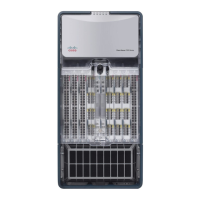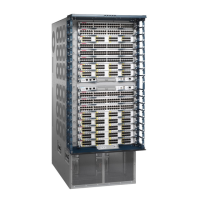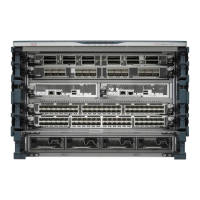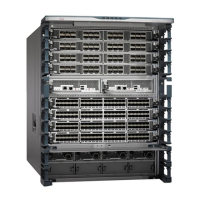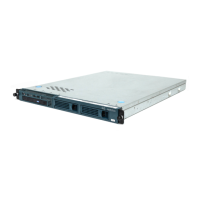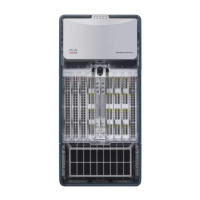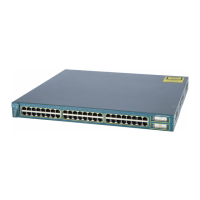2-86 Cisco 7000 Hardware Installation and Maintenance
Preparing Network Connections
• SONET (Synchronous Optical NETwork) is an international standard (ANSI/CCITT) for
standardizing the use of optical communications systems. STS-1 (Synchronous Transport Signal
level 1) is the basic building block signal of SONET; level 1 is 51.84 Mbps. Faster SONET rates
are defined as STS-n, where n is a multiple of 51.84 Mbps. For example, the rate for SONET
STS-3 is 155.52 Mbps, 3 times 51.84 Mbps.
• To connect two routers directly back to back between HSSI ports you need a null modem cable
(CAB-HNUL). The two routers must be in the same location and can be two Cisco 7000s, two
AGS+ routers, or one of each, and both must have a HSSI port available.
AIP Interface Types
All AIP ATM interfaces are full-duplex. You must use the appropriate ATM interface cable to
connect the AIP with an external ATM network.
The AIP provides an interface to ATM switching fabrics for transmitting and receiving data at rates
of up to 155 Mbps bidirectionally; the actual rate is determined by the physical layer interface
module (PLIM). The AIP can support PLIMs that connect to the following physical layers:
• TAXI 4B/5B 100 Mbps multimode fiber optic
• SONET/SDH 155 Mbps multimode fiber optic—STS-3C or STM-1
• SONET/SDH 155 Mbps single-mode fiber optic—STS-3C or STM-1
• E3 34 Mbps coaxial cable
• DS3 45 Mbps (± 20 parts per million [ppm]) coaxial cable
The E3 and DS3 PLIMs both require cable CAB-ATM-DS3/E3. The E3 PLIM connection requires
an EMI filter clip (CLIP-E3-EMI) on the receive port (RCVR).
Note E3, DS3, and TAXI AIPs shipped after February 1995 require Cisco Internetwork Operating
System (Cisco IOS) 10.2(5) or later.
For wide-area networking, ATM is currently being standardized for use in Broadband Integrated
Services Digital Networks (BISDNs) by the International Telecommunications Union
Telecommunication Standardization Sector (ITU-T) and the American National Standards Institute
(ANSI). (The ITU-T carries out the functions of the former Consultative Committee for International
Telegraph and Telephone [CCITT]). BISDN supports rates from E3 (34 Mbps) to multiple gigabits
per second (Gbps). The DS3 interface performs physical layer translation from the AIP to a DS3 line
interface in accordance with ATM Forum UNI Specification Version 3.1, ACCUNET T45 service
specifications, and ANSI T1.107.
The ATM User-to-Network (UNI) specification defines the required Management Information Base
(MIB) functionality for ATM interfaces. Refer to the ATM UNI specification for additional details.
ATM UNI information is arranged in a MIB fashion. MIB attributes are readable and writable across
the Interim Local Management Interface (ILMI) using a Simple Network Management Protocol
(SNMP). The ILMI uses SNMP, without User Datagram Protocol (UDP), and uses IP addressing
along with the ATM MIB.
The AIP supports RFC 1213 interface MIBs as specified in the ATM MIB V2 specification
The ATM interface cable is used to connect your router to an ATM network, or to connect two routers
back-to-back.

